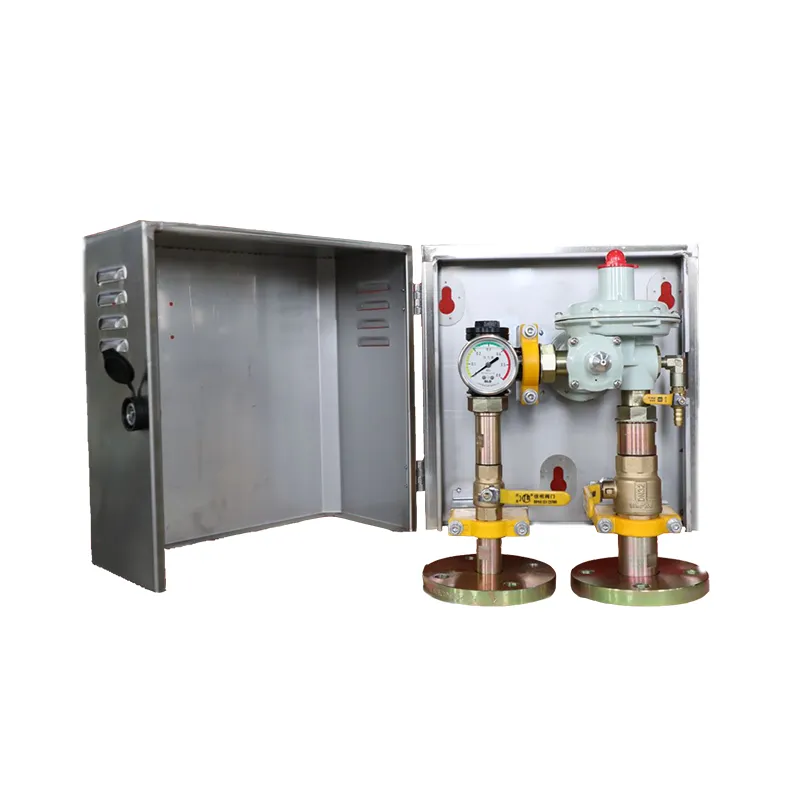
Nov . 25, 2024 12:57
Back to list
مخفض ضغط الغاز
Understanding Gas Pressure Regulators
Gas pressure regulators are essential devices used in various applications to control the pressure of gas in a system. They are crucial in ensuring that the gas delivered is at a safe and usable pressure for different applications, ranging from domestic use such as cooking and heating to industrial processes in manufacturing and chemical production. This article explores the function, types, and importance of gas pressure regulators.
What is a Gas Pressure Regulator?
A gas pressure regulator is a device that reduces the high pressure of gas from a supply source to a lower pressure that can be safely used in applications. The regulation ensures that the output pressure remains consistent regardless of fluctuations in the inlet pressure or variations in gas flow rates. By maintaining this stable pressure, regulators help prevent equipment damage, improve safety, and maintain efficiency.
How Does It Work?
The basic operation of a gas pressure regulator involves two primary sections the spring-loaded diaphragm and the valve. When gas enters the regulator, it acts upon the diaphragm, which is balanced by the pre-set tension of the spring. If the output pressure increases beyond the desired level, the diaphragm moves to close the valve, reducing the flow of gas and subsequently lowering the pressure. Conversely, if the output pressure drops, the diaphragm moves in the opposite direction, opening the valve to allow more gas into the system, thus maintaining the desired output pressure.
This automatic adjustment mechanism ensures that the pressure remains steady, making regulators vital for safe and effective gas distribution.
.
There are generally two main types of gas pressure regulators first-stage and second-stage regulators.
مخفض ضغط الغاز

1. First-Stage Regulators These regulators manage high-pressure gas supplied from tanks or high-pressure lines. They reduce the pressure to a manageable level and are often used in applications where the consumption rate of gas is high.
2. Second-Stage Regulators These are used downstream of the first-stage regulators and further reduce the pressure to a level suitable for use in appliances. They provide fine-tuning of the pressure, ensuring that it is optimal for specific devices like heaters or gas stoves.
Additionally, regulators can be classified based on their design, including relief types, back-pressure types, and adjustable or fixed-pressure types, each suited for different applications and requirements.
Importance of Gas Pressure Regulators
The importance of gas pressure regulators cannot be overstated. First and foremost, they enhance safety by preventing gas leaks and potential explosions resulting from excessive pressure. In industrial settings, maintaining the correct pressure is often critical for processes that require precise control over gas flows.
Furthermore, regulators improve the efficiency of gas usage. By ensuring that appliances receive the proper pressure, they operate more efficiently, thus conserving gas and reducing costs. This efficiency is also beneficial for the environment, as reduced gas consumption leads to lower emissions of greenhouse gases.
Lastly, gas pressure regulators are also essential for compliance with regulations. Various industries are subject to safety standards that mandate the use of pressure regulation systems to minimize risks associated with gas handling and use.
Conclusion
In summary, gas pressure regulators are integral components in the safe and efficient use of gas across various applications. By ensuring that the pressure is consistently maintained at a safe level, they protect both users and equipment while also enhancing overall efficiency. As technology advances, the design and functionality of gas pressure regulators continue to improve, making them even more reliable and effective in meeting the demands of modern applications. Their role in promoting safety and efficiency highlights their indispensable presence in the realms of domestic and industrial gas usage.
Next:
Latest news
-
Safety Valve Spring-Loaded Design Overpressure ProtectionNewsJul.25,2025
-
Precision Voltage Regulator AC5 Accuracy Grade PerformanceNewsJul.25,2025
-
Natural Gas Pressure Regulating Skid Industrial Pipeline ApplicationsNewsJul.25,2025
-
Natural Gas Filter Stainless Steel Mesh Element DesignNewsJul.25,2025
-
Gas Pressure Regulator Valve Direct-Acting Spring-Loaded DesignNewsJul.25,2025
-
Decompression Equipment Multi-Stage Heat Exchange System DesignNewsJul.25,2025

